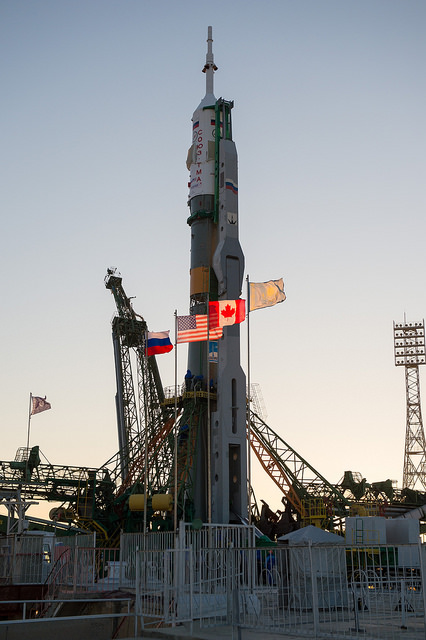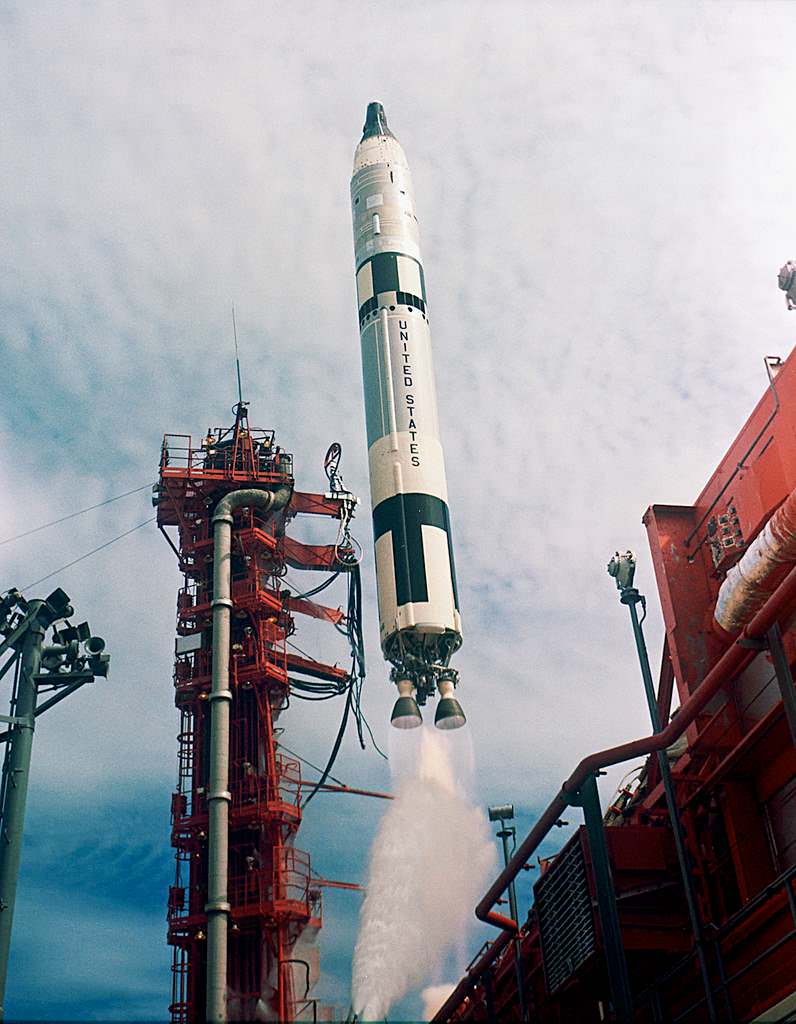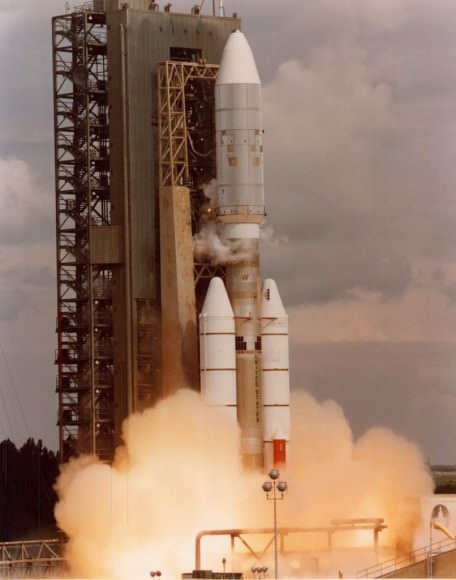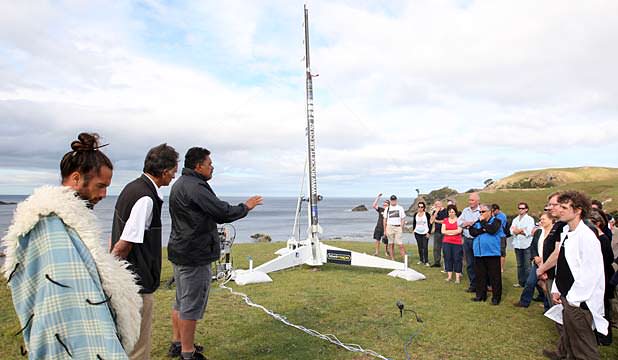Want to know more about the Soyuz rocket? This new video from ESA is based on actual lessons for astronauts about the Soyuz rocket and describes the parts of the Soyuz, the stages and launch sequence. The info here was part of ESA Basic Training for the ESA astronaut class of 2009 (also known as the Shenanigans09).
Want to Look Inside a Burning Rocket Engine?
Here’s a bit of pretty amazing hobby rocket porn. Ben Krasnow walks us through — in a rather matter-of-fact way — of how he built a hybrid rocket engine in his shop using a piece of acrylic so he could see inside and watch the gaseous oxygen burn. As one commenter on You Tube described it, “Hey guys, I was bored, so I built a transparent rocket engine in my garage. No big deal.”
“This engine is only meant to run for 10 seconds at most,” says Krasnow in his video, “and so this construction isn’t going to last long enough to make a reusable rocket, let’s just say. This is definitely for demo only!”
Next up, Krasnow will travel through time to contact Montgomery Scott to find out how to create transparent aluminum. If seeing this video makes you want to do an impression of Tim the Toolman Taylor, Krasnow also has a video tour of his shop.
Soyuz Rocket’s Comet-like Re-Entry Captured on Video
Part of the Soyuz rocket that brought the latest trio of crew members to the International Space Station fell back to Earth on Dec. 24, and its fiery re-entry was captured by several skywatchers in Europe. This footage taken from Germany is the best view of it, and there’s another good view below. Some people mistakenly thought it was a comet; and since this lightshow occurred on Christmas Eve, there were a few who suggested it might be Santa flying across the fly. That would have been bad news, however, to see debris breaking off the sleigh…
Additionally, there are reports that debris from the failed Soyuz rocket that was supposed to send a communications satellite into orbit fell and hit a house in Siberia. An animation of that event is also posted below. Continue reading “Soyuz Rocket’s Comet-like Re-Entry Captured on Video”
Comet Curiosity? MSL Looks Like a Comet as it Heads Toward Mars
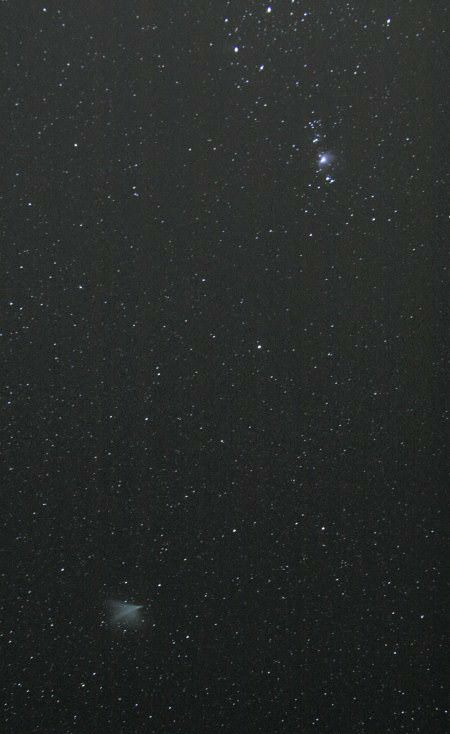
What does a spacecraft look like as it lights-out for another world? This incredible time-lapse video was taken by astronomers at the Sir Thomas Brisbane Planetarium in Australia. The sequence shows a plume drifting against the background stars, probably caused by venting from the Centaur rocket stage that sent the Mars Science Laboratory/Curiosity Rover on its way to the Red Planet, after it carried out a burn over the Indian Ocean on November 26, 2011.
Brisbane Planetarium Curator Mark Rigby said that he and photographer/amateur astronomer Duncan Waldron, along with another planetarium staff member were likely the only people who saw this amazing sight, as they have received no other reports of similar observations.
Rigby said they are “are over the Moon – or higher” from seeing the departure of the Mars Science Laboratory, its rocket stage and plume above Australia on Sunday. “It is a real shame that we couldn’t have woken up everyone that didn’t have clouds,” Rigby wrote on the Planetarium’s Facebook page. “Even we didn’t expect to see such a spectacle. Can you imagine the feeling if there had been a crew onboard heading for Mars?”
Rigby first saw the plume at 2:15am local time, (16:15 UT) and said it was “a one-degree elongated cloud of VERY easy naked eye brightness.” Duncan Waldron also saw it starting at about 2:30pm and began to photograph it until it faded. Nonetheless, he captured a unique timelapse covering 21 minutes until 3am.
Here is one of Waldron’s images, below:
[/caption]
The coordinates of the observing site: -27.630779,152.966324, altitude 40m approx.
Congrats to the Sir Thomas Brisbane Planetarium team for capturing such an amazing and historical sight!
Amazing Amateur Rocket Launch Reaches 121,000 feet
Wow! Take a look at this for a little “bang! zoom!” in your day! This video shows an incredible video of an amateur rocket launch, which could be eligible for a $5,000 rocketry prize. Led by Derek Deville, the rocketeers launched their custom-built 26 ft. (8 meter) Qu8k (pronounced “Quake”) rocket on September 30, 2011 from the Black Rock Desert in Nevada. It reached an altitude of 121,000 feet (36,880 meter) in 92 seconds, at speeds of 2,185 mph (3,516 km/h). Holy speeding missiles, Batman! The Qu8k rocket returned to Earth safely just 8.5 minutes later, landing 3 miles (5 km) from its launch point.
The incredible footage from on on-board camera shows the curvature of Earth and the black sky of space. See the full video below.
Continue reading “Amazing Amateur Rocket Launch Reaches 121,000 feet”
Pictures of Rockets
Here are some cool pictures of rockets.
[/caption]
This is an image of the Gemini-Titan 11 rocket lifting off from Cape Canaveral in 1966. This was the 9th manned flight as part of the Gemini program, carrying Charles Conrad and Richard Gordon into space.
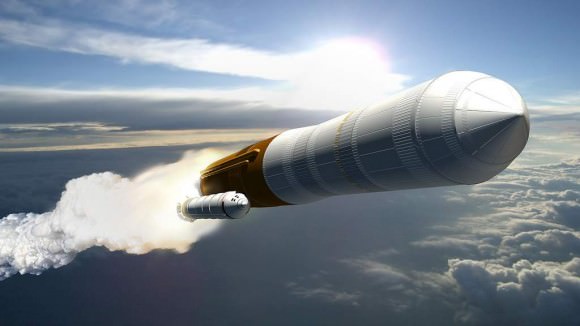
This is an artist’s illustration of the Ares V rocket, currently under development by NASA. This enormous rocket will be the lifter that carries equipment into space for future human Moon missions.
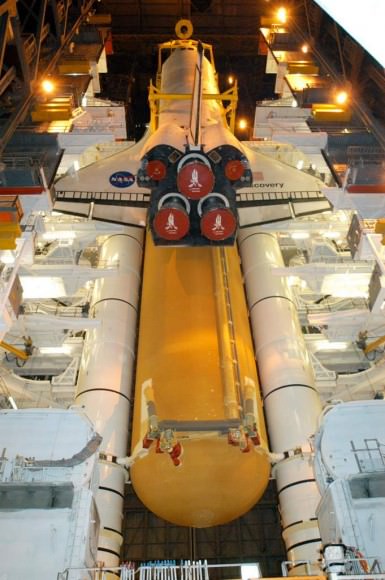
This is an image of the space shuttle’s external fuel tank coming out of a hanger. The tank is filled with liquid hydrogen and helium, which feeds the space shuttle’s main engines at the tail of the spacecraft. It’s covered with an orange foam to keep the cold liquids insulated.
This is an image of NASA’s Voyager 2 launch atop a Titan III rocket. Voyager 2 went on to explore all of the outer planets in the Solar System, sending back the first ever images Uranus and Neptune.
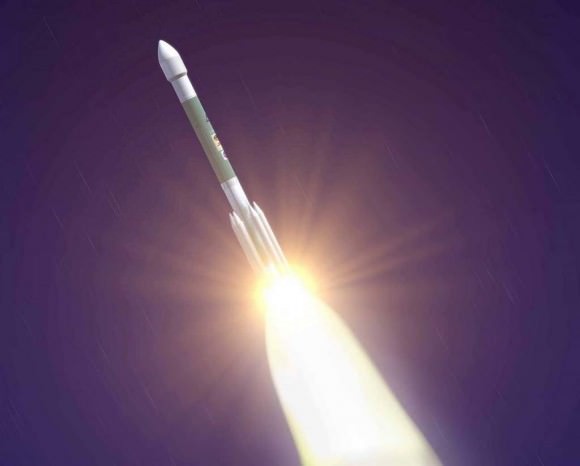
This is an image of a Delta II rocket blasting off with one of the Mars Exploration Rovers on board.
We’ve written many articles about rockets for Universe Today. Here’s an article about rockets launched by India to monitor an eclipse, and here’s an article about how rockets work.
If you’d like more info on rockets, check out NASA’s Rockets Educator Guide, and here’s a link to the Beginner’s Guide to Rockets.
We’ve recorded an entire episode of Astronomy Cast all about rockets. Listen here, Episode 100: Rockets.
New Zealand Launches First Rocket
Today was a proud day in the history of New Zealand, marking the first ever home-grown rocket launch from the island. The private space company Rocket Lab, Ltd launched their Atea-1 rocket to a height of over 100 km at 2:28pm (NZST). The launch took place at Great Mercury Island, just off the coast of the North Island, and is a first for the company as well as the country.
Rocket Lab, Ltd was formed three years ago with the hopes of developing a rocket that would make space more accessible. The Atea-1 rocket has a small payload capacity, 2kg (4.4lbs). This first test of the rocket had a payload that recorded how well the engine burned during the 22-second firing, as well as a GPS locator for recovery. As of this writing, the 1st stage booster section was recovered, but the company is still looking for the payload stage.
The target of the launch was 50km (31miles) northeast of Great Mercury Island, and the team hopes to recover the second stage within the next two days so as to analyze the measurements taken on how well the test flight went.
The launch was initially scheduled for 7:10am, but a number of technical issues delayed the flight until the afternoon. A section of aerocoupler, which connects the fuel line to the rocket, froze up, which stuck the rocket in place on its pad. A helicopter was dispatched to Whitianga on the North Island to pick up another coupler from an engineering supplier.
After almost scrubbing the launch three times, emptying the rocket and refueling it, the team was ready to go at 2:30. The 6meter (20 foot) long rocket was launched above the Karman line, 100 km (62 miles) above the Earth, making this an official flight into space.
Atea is the Maori word for space, and this specific rocket was named Manu Karere – meaning ‘bird messenger’ – by the local Thames iwi. Rocket Lab founder, Mark Stevens (who legally changed his name to Mark Rocket about seven years ago) told the Waikato Times, “The last six months have been a terrific amount of work. The tech team has put in a massive effort. It’s not trivial sending something into space. This is a huge technological leap for New Zealand.”
The video interview of Mark Stevens and Peter Beck embedded below is courtesy of the New Zealand Herald.
Rocket Lab has produced a number of products for the aerospace industry, including separation systems, rocket fuel and software. The company is completely privately funded.
This isn’t the first rocket to be launched from the island. That distinction belongs to a rocket that was imported in 1963 by the Cantrbury University physics department to conduct upper atmospheric research in collaboration with the Royal New Zealand Air Force. That rocket only went to 75km (46 miles), making Atea-1 the first ever rocket to be launched into space, and adding New Zealand and Rocket Lab to the ever-lengthening list of space-faring enterprises.
Source: Waikato Times
Company Flies Biofuel Rocket (Video)
Flometrics, Inc. successfully flew a liquid fueled rocket with a 100% renewable fuel, a version of JP-8 (Jet Propellant 8) and liquid oxygen. The 180 lb (81 kg) rocket was 20 feet (6 meters) tall, 1 foot (.3 meters) diameter and it was powered by a RocketDyne LR-101 rocket engine that was originally used as a steering engine on the early Atlas and Delta rockets. The rocket performance during the 15 second long burn was better than the performance of a similar rocket using RP-1 refined kerosene rocket fuel. It reached an altitude of approximately 20,000 ft (6096 m) and may have exceeded Mach 1. The biofuel ran cleaner than the standard rocket fuel that has been used before. Since the biofuel was originally designed for jets, it may be possible to tune it for better performance in rocket engines. The fuel was developed by the Energy and Environment Research Center (EERC) at the University of North Dakota.
Source: Flometrics
First Rocket
[/caption]
Rocketry is actually older than many people think. The first rockets originated in China and subsequently the Middle East with the discovery of gunpowder. These rockets were used for military purposes or as entertainment. The use of rockets and gunpowder would eventually transform warfare, and to this day we still use rockets in pretty much the same way they were used 700 years ago. The only difference is that when we use rockets for military purposes we call them missiles and when used for entertainment they can be toys or pyrotechnics.
The composition of the first rocket was what is now in aeronautics called a solid rocket. This rocket runs on a solid fuel that burned inside the rocket. The heated exhaust is expelled out the bottom the rocket, creating the thrust needed to fly. The composition of solid fuel rockets is still pretty much the same as in ancient times.
The casing is the body of the rocket. Rockets were made differently depending upon their end use. For example, solid rockets that were used in space programs had steel casings. The next important element of a solid rocket was the grain. The grain is the solid fuel needed to power the missile. The first types used had gunpowder as the grain but the formula could be altered. If you ever saw a fireworks display, this is why the explosions have different colors. The additions of different metals and composites in the grain of the rockets creates this effect. The final components; the fuse. This was the ignition device used to start the combustion process of the rockets fuel. Later as rocketry was further researched a nozzle was added to the design to better direct exhaust and improve thrust.
The first rockets that were used in modern rocketry was invented by Dr. Robert Goddard. For this he is known as the Father of Modern Rocketry. He created the first successful liquid fuel rocket, adding the nozzle design that is so common today. The liquid fuel rocket ran on a slightly different design than its predecessor with the fuel being released from a pressure tank to a combustion chamber where it was mixed with air or another oxidizer to burn and create heated exhaust which was directed away to create thrust. This would be the design that would pave the way for modern aeronautics and eventually space exploration.
So as we see rockets have come a long way from their earliest day. Nevertheless, they are still playing an important role in the development of human technology. Making new advances possible every day with the missions and experiments they support.
If you enjoyed this article there are other related articles on the Universe Today website you might want to checkout. Here is an article that talks more about solid fuel rockets. If you want to learn more about modern rockets this article on new advances made on liquid fuel rockets.
There are other interesting articles you can find on the web. Time magazine has a great profile article on Robert Goddard. Another good resource is the NASA website which has a brief article on the history of rockets.
You might also enjoy listening to an episode of Astronomy Cast. Episode 100 Rockets is relevant to the stuff talked about in the article.
Source: Wikipedia
Spaceflight
Even before man had managed to take to the skies on our planet, he had thought of spaceflight and soaring through the skies of the planets that he could see. As soon as the Montgolfier brothers had successfully launched their first hot air balloon a race began to see who could fly untethered, then into space. That race for spaceflight never let up. Yuri Gagarin and the Soviet space program arrived first, but the Americans were close behind and were committed to one-up-manship.
Tackling all of the spaceflight articles on the internet would take a dozen researchers a lifetime. Of course, you do not have that kind of time or patience, so we have assembled links to all of the articles that we have here on Universe Today related to the topic. We do not expect you to just dive in blind, so here are a few fun facts about spaceflight.
The average space suit costs a little over $12 million(U.S.). Not bad for an outfit that can protect you from a meteorite.
There are 13,000 detectable pieces of space junk…left over pieces and parts from space repairs, broken down satellites, etc. Where ever man goes, garbage seems to accumulate. Some of this junk managed to destroy at least one satellite.
We are on the cusp of full blown space tourism. The ultrarich have been buying trips on space shuttle missions for years, but there are at least two companies that have tested commercial spacecraft.
Many of today’s modern rockets are a variation of the German V2 rocket.
There are hundreds of interesting facts about spaceflight in the links below. Everything from space food to space tourism and the different mission launched by various space agencies. Hopefully, you will find everything that you need and, as always, enjoy your research.
- Adaptive Optics (AO)
- Air-Launch
- Atmospheric Interference
- Ballistic Capture
- Ballistic Trajectory
- Benefits of Space Exploration
- Bio-mimicry and Space Exploration
- Can We Own Space?
- Clarke Belt
- Cosmic Expansion
- CubeSats
- Decadal Survey
- Deep Space
- Deep Space Network
- Drake Equation
- Earth Observation
- Electric Sail
- Electromagnetic Spectrum
- Extrasolar Planets
- Fast Radio Bursts
- Fermi Paradox
- Fusion Power
- Galactic Collision
- Golden Records (Voyager)
- Gravitational Lensing
- Gravitational Waves
- Hibernation
- How High is Space?
- Inflatable Habitats
- Interferometry
- Interplanetary Transport Network
- Interstellar Travel
- Ion Engine
- Launch Facilities
- Launch Failures
- Lithopanspermia
- Lunar Gateway
- Lunar Exploration
- Low Earth Orbit
- Overview Effect
- “Mars Curse“
- Moon Mining
- Nuclear Propulsion
- Orbital Refueling
- Panspermia
- Pioneer Anamoly
- Pioneer Plaques
- Radar
- Radar, Lidar, and Sonar
- Reusable Rockets
- Rockets
- Rockoons
- Satellites
- Satellite Internet
- Search for Extraterrestrial Intelligence (SETI)
- See My House From Space
- Shouldn’t We Fix Earth First?
- Single-Stage to Orbit (SSTO) Rockets
- Solar Electric Propulsion (SEP)
- Solar Sail
- Space Elevator
- Space Junk
- Space Madness
- Space Radiation
- Space Telescope
- Space Tourism
- Spaceline
- Spaceports
- Supermassive Black Hole Merger
- Terraforming
- Weather Satellites
- WOW! Signal

